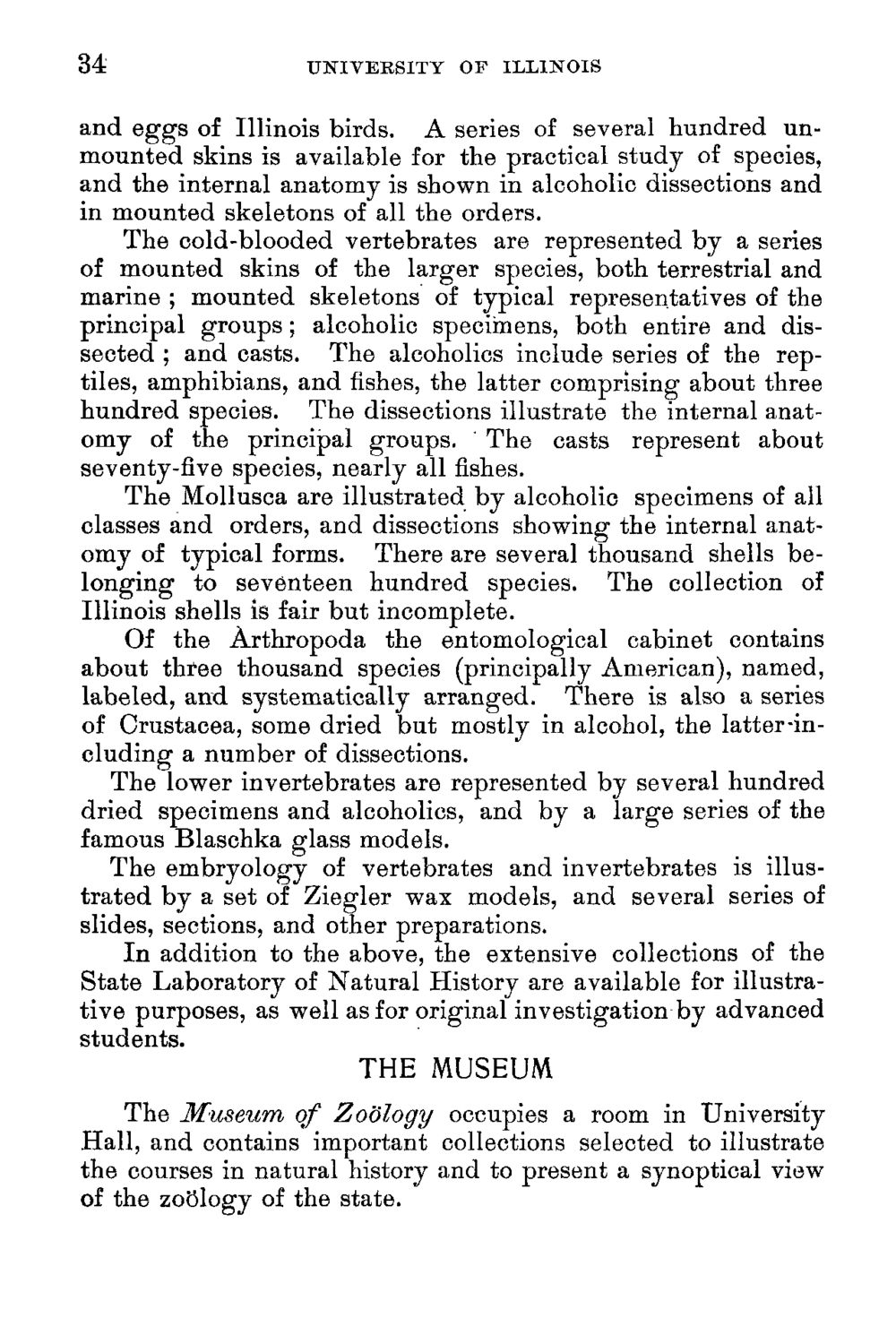| |
| |
Caption: Course Catalog - 1895-1896
This is a reduced-resolution page image for fast online browsing.

EXTRACTED TEXT FROM PAGE:
34 UNIVERSITY OP ILLINOIS and eggs of Illinois birds. A series of several hundred unmounted skins is available for the practical study of species, and the internal anatomy is shown in alcoholic dissections and in mounted skeletons of all the orders. The cold-blooded vertebrates are represented by a series of mounted skins of the larger species, both terrestrial and marine ; mounted skeletons of typical representatives of the principal groups; alcoholic specimens, both entire and dissected ; and casts. The alcoholics include series of the reptiles, amphibians, andfishes,the latter comprising about three hundred species. The dissections illustrate the internal anatomy of the principal groups. The casts represent about seventy-five species, nearly all fishes. The Mollusca are illustrated by alcoholic specimens of all classes and orders, and dissections showing the internal anatomy of typical forms. There are several thousand shells belonging to seventeen hundred species. The collection of Illinois shells is fair but incomplete. Of the Arthropoda the entomological cabinet contains about three thousand species (principally American), named, labeled, and systematically arranged. There is also a series of Crustacea, some dried but mostly in alcohol, the latter-including a number of dissections. The lower invertebrates are represented by several hundred dried specimens and alcoholics, and by a large series of the famous Blaschka glass models. The embryology of vertebrates and invertebrates is illustrated by a set of Ziegler wax models, and several series of slides, sections, and other preparations. In addition to the above, the extensive collections of the State Laboratory of Natural History are available for illustrative purposes, as well as for original investigation by advanced students. THE MUSEUM The Museum of Zoology occupies a room in University Hall, and contains important collections selected to illustrate the courses in natural history and to present a synoptical view of the zoology of the state.
| |